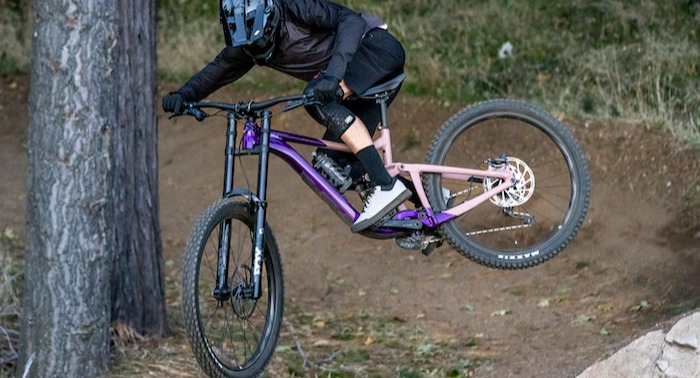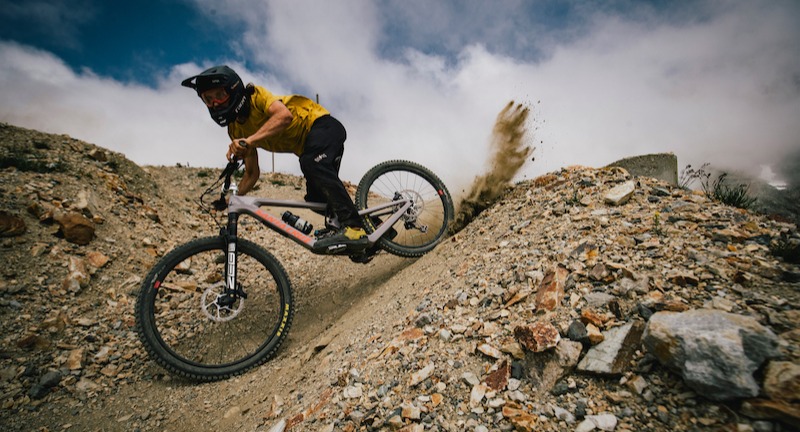
Mountain Bike Suspension Setup
A good mountain biking suspension setup should feel buttery smooth and responsive. When your suspension is properly set up, you'll experience better traction and more comfortable rides, especially in the rough stuff. A good suspension setup also helps you maintain your speed and improve your confidence while riding.
With the right setup, you can enhance your riding experience and reduce the risk of injury by providing optimal support and control for your bike. Taking the time to learn about suspension setup and tuning is well worth it for any serious mountain biker looking to improve their performance and enjoyment on the trail.
We've put together this page to help you dial your suspension setup, so you can experience a smoother, more responsive ride and greater confidence in your mountain bike.
If you'd prefer to get help with your mountain bike suspension setup, come and see us. We're happy to help!
MTB Suspension Setup Glossary
Here are some common terms related to mountain bike suspension setup that you should know:
Sag: The amount of compression in the suspension when you sit on the bike.
Compression: The amount of force required to compress the suspension.
Rebound: The speed at which the suspension returns to its original position after compression.
Damping: The process of controlling the speed of compression and rebound in the suspension.
Bottom-out: When the suspension reaches its full compression limit.
Air spring: A type of suspension that uses compressed air to provide spring support.
Coil spring: A type of suspension that uses a metal coil spring to provide support.
Shock pump: A pump used to inflate or adjust the pressure in your fork and shock.
Lockout: A compression alteration that increases riding efficiency on smoother terrain (despite the name, it doesn't completely 'lock' the suspension).

Fox MTB Suspension Setup Guides
If your bike has a Fox Fork or Rear Shock, the Fox Bike Center will help you find information to setup, use, and service your Fox suspension products.
Look to the Fox Owner's Manuals to find information to setup your suspension and tune it for performance and comfort on the trails.

RockShox Suspension Setup
RockShox have this really cool app to help you get your suspension dialled and ready to ride.
The tuning recommendation asks for your weight (including your gear - so clothing, body protection, helmet, and backpack). It also asks about the type of bike you ride (emtb or MTB). Then, it calculates your ideal PSI and rebound.
How to Set Up Your Mountain Bike Suspension
Mountain Bike Sag Setup Tips
Sag refers to the amount of suspension travel that compresses under the rider's weight when they are sitting on their mountain bike. It is a key parameter in setting up the suspension to optimize its performance. Sag is typically expressed as a percentage of the total available suspension travel.
When setting up sag, the goal is to find the right balance that allows the suspension to respond to bumps and terrain while maintaining traction and efficiency. A proper sag setup ensures that the suspension is not too stiff, causing a harsh ride and reduced traction, or too soft, leading to excessive bottoming-out and loss of control. By adjusting the air pressure or preload, riders can achieve the desired sag percentage, which is typically around 25-30% for rear suspension and 15-25% for front suspension. Fine-tuning sag based on personal preference and terrain conditions can greatly enhance the overall performance and comfort of the mountain bike.
Mountain Bike Rebound Setup Tips
If you don't setup your rebound, then you'll be riding a bicycle-shaped pogo stick.
Rebound refers to the speed at which the suspension extends or rebounds after compressing. The rebound damping adjustment on a mountain bike's suspension allows riders to control this extension speed.
Proper rebound damping is crucial for maintaining control, traction, and stability on the trails. If the rebound is set too slow, the suspension will take longer to extend, leading to a "packing down" effect where successive bumps are not absorbed efficiently. This can result in a harsh and bouncy ride, reduced traction, and a loss of control.
On the other hand, if the rebound is set too fast, the suspension will extend too quickly, causing the bike to bounce and lose contact with the ground. This can result in a lack of control, especially in rough or high-speed sections.
By adjusting the rebound damping, riders can find the optimal setting that allows the suspension to extend at a controlled and balanced speed.
